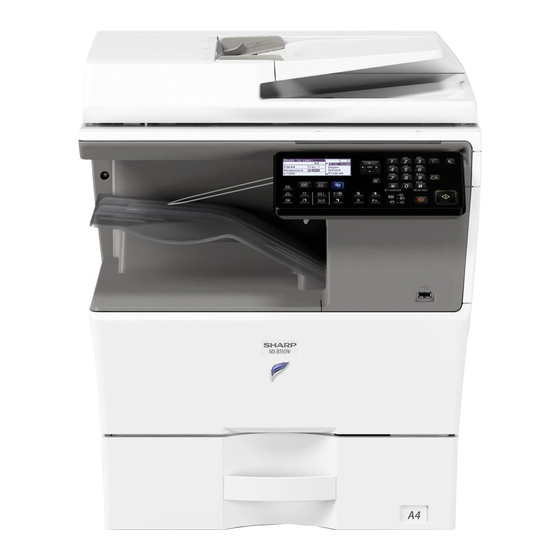
Table of Contents
Advertisement
Quick Links
DIGITAL MULTIFUNCTIONAL SYSTEM
User's Manual
MODEL: MX-B350W
Click to jump to the table of contents of the
desired chapter.
BEFORE USING THE MACHINE
Functions of the machine and procedures
for placing originals and loading paper
COPIER
Using the copy function
PRINTER
Using the printer function
FACSIMILE
Using the fax function
SCANNER
Using the scan function
TROUBLESHOOTING
What to do when a paper misfeed or other
problem occurs
SYSTEM SETTINGS
Configuring settings to make the
machine easier to use
WEB PAGES
Machine settings configured from the Web
page
MX-B450W
Advertisement
Chapters
Table of Contents














Need help?
Do you have a question about the MX-B350W and is the answer not in the manual?
Questions and answers
LCD Screen shows "maintenance required. call for service" what does this mean?
The message "Maintenance required. Call for service." on the Sharp MX-B350W LCD screen means that the machine needs regular maintenance. You should turn off the power and then turn it back on. If the message persists, write down the 2-digit main code and 2-digit sub-code displayed, turn off the power, and contact the SHARP Service Department for further assistance.
This answer is automatically generated